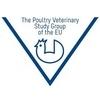Maternal Antibody Interference in Newcastle Disease Vaccination
Maternal immunity plays significant role in protecting commercial layer chicks against Newcastle Disease at early stage of life. The level of protection depends on the protective antibody titre across the flock which declines fast by the end of first week. However maternal antibody still persists below protective level for another few weeks. Presence of maternal immunity above protective level can neutralise the live vaccine virus during early first week and subsequently making the birds susceptible to NDV infection when the titre moves down to below protective level by the end of second week. Protective efficiency of attenuated vaccines are always questioned in any such interference. This advocates the necessity of vaccinating the birds at right time to protect them against NDV and at the same time minimize the maternal antibody interference. In view of these a study was conducted to quantify the maternal antibody titre against NDV at early stage of commercial layer to determine the right time of vaccination with minimal interference. A suitable cost effective intervention programme against NDV is possible only when the issue of maternal antibody interference is addressed properly.
Key words: attenuated vaccine. Serum antibody titre.




Alexander, D.J., 1978. Newcastle disease diagnosis. In: D.J. Alexander (ed.), Newcastle Disease Diagnosis and Vaccination, (Boston: Kluwer Academic Publishers), 147-160
Alexander, D. J., 1997. Newcastle disease and other avian paramyxovirus infections. In: Diseases of Poultry, Tenth Edition, Calnek , B. W., Barnes, H. J., Beard, C. W., Iowa State University Press. Iowa. USA. 541570.
Alexander, D. J., Banks, J., Collins, M. S., & Aldous, E. W., 1999. Antigenic and genetic characterization of Newcastle disease viruses isolated from outbreaks in domestic fowl and turkeys in Great Britain during 1997. Vet Rec. 145. 417-421.
Aldous, E. W., & Alexander, D. J., 2001. Technical Review: Detection and differentiation of Newcastle disease virus. Avian Pathol. 30, 117-128
Office International des Epizootics. (2000 & 2004). Report of the meeting of the OIE Standard Commission, November 2004, Paris, Franch.

Serological evaluation is a way of estimating the protection levels in the flock. This is the guideline to judge the effectiveness of vaccines practiced everywhere.
Challenge is another tool. It requires a controlled facility to expose birds to live virus and count the mortality. Somebody with facility can take it up. it is a proven fact that birds with higher levels of antibodies live better when challenged with live virus.
Yes, birds with low levels of antibodies also live till they are exposed to disease. Once they are exposed, the group having low titers face more mortality.
HI titer evaluation as a response to vaccination at different points is a good lead for further research like exposure evaluation.
As a poultry grower, I will postpone my ist vaccine to 5th day from day one to avoid maternal antibody interference.

Good work. day old live vaccine can be a reason for the failure of vaccine as it is neutralized by mab.
Many people are now a days attributing the failure to emergence of new strains of nd which may require revision in the thinking. n.d is known to be a single strain for a long time.
Did you check whether this affects the sub conjunctival or intra ocular means of vaccination with B1 hitchner or B1 lasota? I guess strongly that subconjuctival immune glands called haderian gland will prevent the antigen to get to the bloodstream for antisera attack. Could you please discuss this?

Dear
In high epidemic area, such as the middle east -especially gulf region-, we should vaccinate at day old in spite of high maternal abs level in chicks due to vaccination at day old will provide local immunity which important for protection against Nd challenge and prevent filed strain to attach with receptors
So you can review about using ND vector vaccine which did not interfere with maternal abs and may provide cell mediated and humoral immunity.
Thanks & regards.
.jpg&w=3840&q=75)

Candidate Genes Associated with Survival Following Highly Pathogenic Avian Influenza Infection in Chickens
Birds were not challenged, this type of research has no value. Birds can be protected very well without antibodies.


















